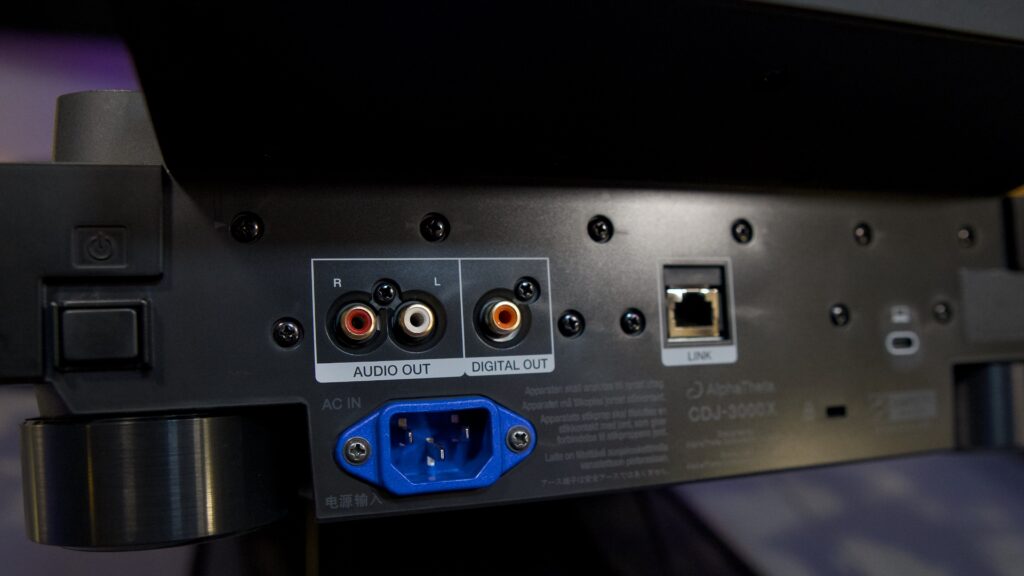CDJ-3000X review written by David Michael of Passionate DJ.
Introducing the CDJ-3000X
With an enormous new screen and Wi-Fi access, AlphaTheta (notably, not Pioneer DJ) has brought its flagship player into 2025.
It’s the best-sounding and, we’ve been told, the best-built CDJ ever made.
The Pioneer DJ / AlphaTheta CDJ line of products has long dominated large-scale professional installations in festivals and clubs all over the world.
With this CDJ-3000X, we’re seeing an acknowledgement that music is accessed differently in 2025 and beyond. DJs are no exception.
In fact, the lack of Wi-Fi streaming capabilities was a huge miss on the original CDJ-3000, which is now being rectified – and doubled-down on. New features such as logging in with NFC (or QRC code) hint at this new direction.
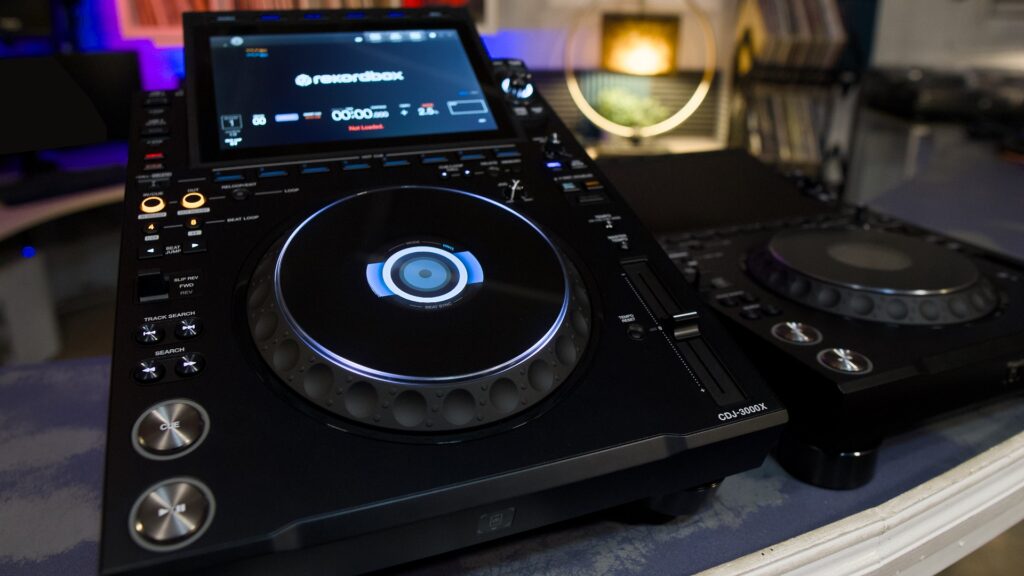
CDJ-3000 vs. CDJ-3000X (What’s New?)
Here’s the list of new features on the CDJ-3000X:
- Built-in WiFi
- Cloud access + streaming services
- Full track caching
- 10.1” touchscreen (same capacitive glass display found on the XDJ-AZ, Opus Quad)
- NFC or QR code login
- USB-C connections (SD card slot removed)
- Strengthened Play/Cue buttons + RGB hot cue color
- Redesigned jog wheel and tension adjustment
- Global Tag List
- Copy/Paste (more playlist editing features planned)
- Playlist reordering
- SQ improvements (new ESS Technology DAC and power supply)
- Gate Cue/Smart Cue/Touch Cue
- Wider
- Refined aesthetic
The built-in WiFi is welcomed. This gives you access to cloud storage via Google Drive or Dropbox, or streaming music via Tidal or Beatport.
You can stream music straight to the CDJ from these services, and don’t even need any USB connected. CloudDirectPlay means you get direct access and it will just play.
You also now have full track caching, which means that if someone steals your USB, at least the party will keep going until the end of the song. No more emergency loop.
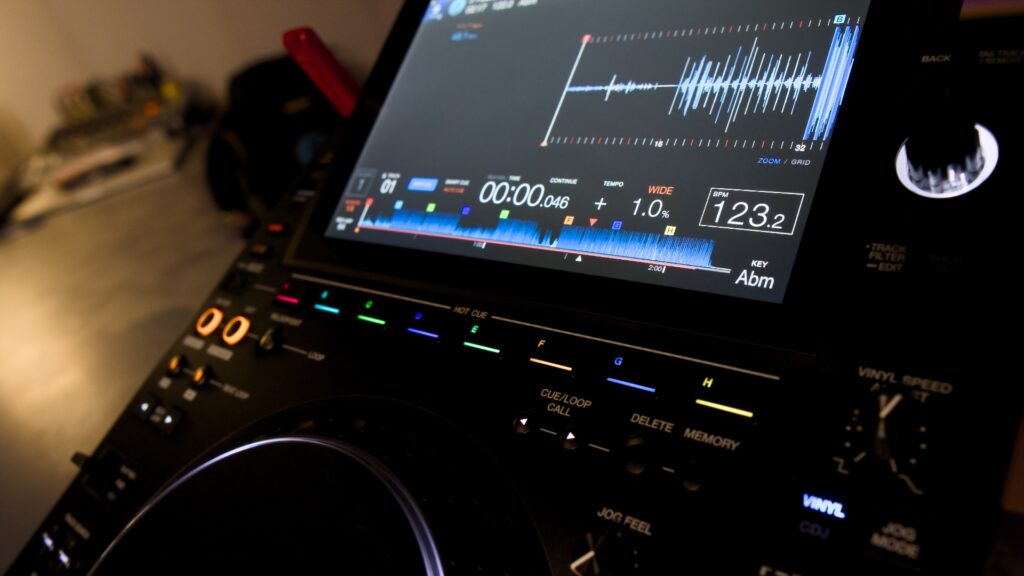
The enormous upgraded touch screens are the same 10.1” capacitive glass displays found on the XDJ-AZ and the Opus Quad. They look bright and crisp, though black levels could be better.
The “tap to login” feature worked well. When the little symbol on the front of the player is flashing, tap your phone on it, which will send you a notification and complete the login process.
I found this process pretty easy, and I was able to access my TIDAL account on the device even though I currently pay for no other rekordbox or cloud subscriptions.
You’ll also notice the addition of USB-C ports, though there’s still a port for your old-school thumb drive. The SD card has now been removed. There’s also a USB-C port on the back of the player for connecting to your laptop.
More Great Updates
Overall, AlphaTheta has improved the physical reliability of the device. Specifically, they mention that the play and cue buttons can withstand over half a million more presses.

Perhaps a little more interesting is how the cue button changes colors with different hot cues.
They also have redesigned the jog wheel, and its tension. Indeed, the jog wheel feels nice and spins flawlessly (see demonstration in the video above).
The new Global Tag List feature means you can tag songs across all sources (whether USB, streaming, or on the cloud) and have them show up in one temporary playlist.
Also, these songs will download locally to the device (up to 40 or 50 songs at a time), so that you can play without worrying about losing connection in the moment.
This helps build a lot of confidence with the idea of using music sourced from Wi-Fi.
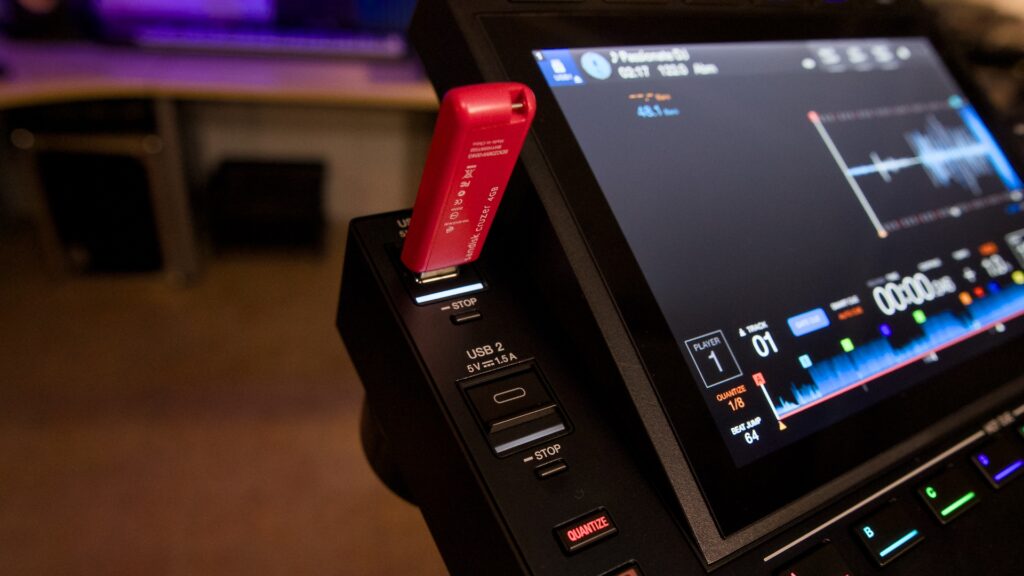
The 3000X now has a copy-and-paste function. Simply hold down on the bit of text you want to copy, like a track title, then use the on-screen paste button.
You can even do some basic playlist editing now. If you click the edit button, you can drag songs around and re-order them. AlphaTheta says that more onboard editing features are coming with future updates.
They’ve also, once again, upgraded the sound quality using a new 32-bit digital/analog converter from ESS technologies and a redesigned power supply.
Cue Features
You can also find a few new Cue related features. Normally, Hot Cues will play the track continuously. However, Gate Cue makes it so the track only plays while you hold the Hot Cue down.
Smart Cue means the position and color of a called-up hot cue will automatically overwrite the current, temporary cue point.
With Touch Cue, you can preview a song in your headphones simply by touching the waveform with your finger.
In summary, it’s the best version of the CDJ ever made – though you’re not going to find any crazy new features like stems or dual layer technology. Keep this in mind if you’re an owner of the original 3000 and considering an upgrade. The original is still a fantastic player in its own right.
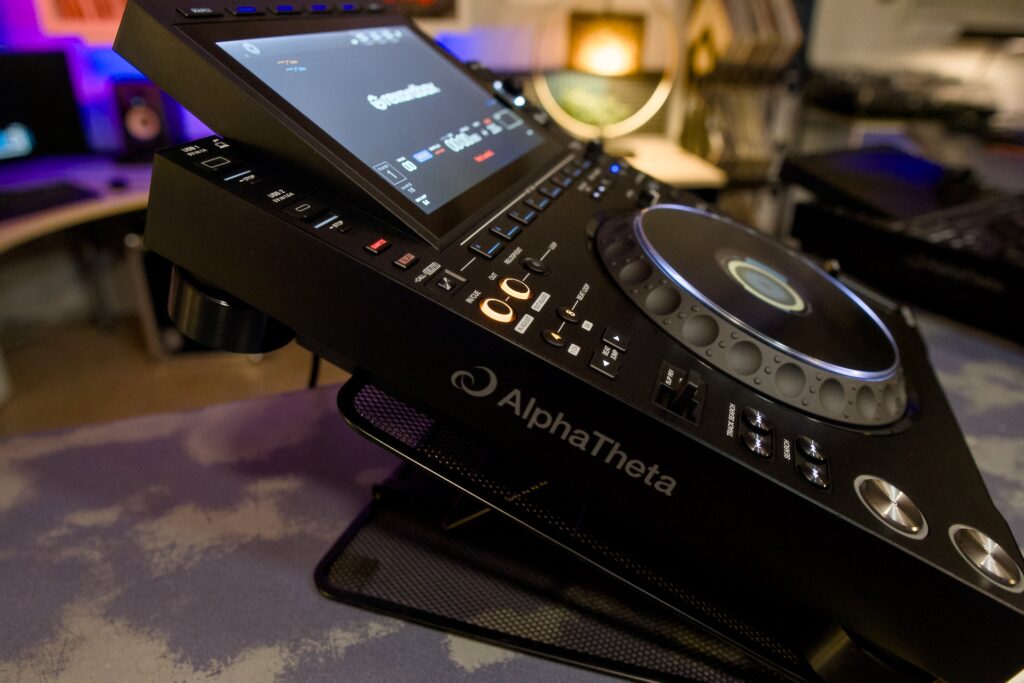
Sound Quality
AlphaTheta claims that this is the best sounding CDJ yet, with upgraded components that deliver the utmost in pristine sound quality.
I did test this myself, of course, and here’s my standard disclaimer: I don’t have a sound-treated room, audiophile-grade speakers, or magic ears. Everything I say about sound quality is subjective.
And indeed, when comparing the output of these players vs. my old-school XDJ-1000s, I hear a subtle difference. I tested this by connecting them both to a DJM-A9, syncing the songs for time and volume, and flipping back-and-forth with the cross fader.
I had to try to hear the difference. It was subtle, but it was there: slightly more presence in the upper midrange, slightly more beef in the bass range, and maybe a little better stereo separation.
Unfortunately, I didn’t have an original 3000 in the room with me to do this same comparison. But again, I’m comparing it with a much lower end option, and I had to really try to hear the difference. I’m not sure if I’d hear anything in comparing with the 3000 (or the Denon SC6000 for that matter) that wasn’t placebo effect.
So, yes, the 3000X sounds pristine, at least when tested on my QSC speakers here in the studio.
Wrapping Up
Generally speaking, the 3000X has an overall wider stance and a refined aesthetic. It truly looks good, feels very solid, cleans up easily, and is the high-end flagship product you expect.
It’s the best version of the CDJ ever made, though you’re not going to find any crazy new features like stems or dual layer technology.
Keep this in mind if you’re an owner of the original 3000 and considering an upgrade. The original is still a fantastic player in its own right.
In any case, the price tag is a seriously big ask for those of us looking for something for home use.
Not to state the obvious, but these 3000X’s are meant to be installed in clubs and festivals around the world, for multiple working DJs to use, where the priority is consistency, reliability, and top-notch sound quality.
Whether we’re talking AlphaTheta or Pioneer DJ, the company still offers a bunch of entry points. You could instead get a pair of XDJ-1000 mk2s and a DJM-750 mk2 mixer, and I guarantee it will cover the needs of most of us.
Or, you could get an all-in-one like the XDJ-AZ, which is also expensive, but not nearly as expensive as *four* CDJs and a mixer.
Hell, to be honest, many of us would be better off with a DDJ-FXL10 or similar Rekordbox controller at home.
But for those who want the “Ferrari”, the CDJ-3000X offers a delightful experience.
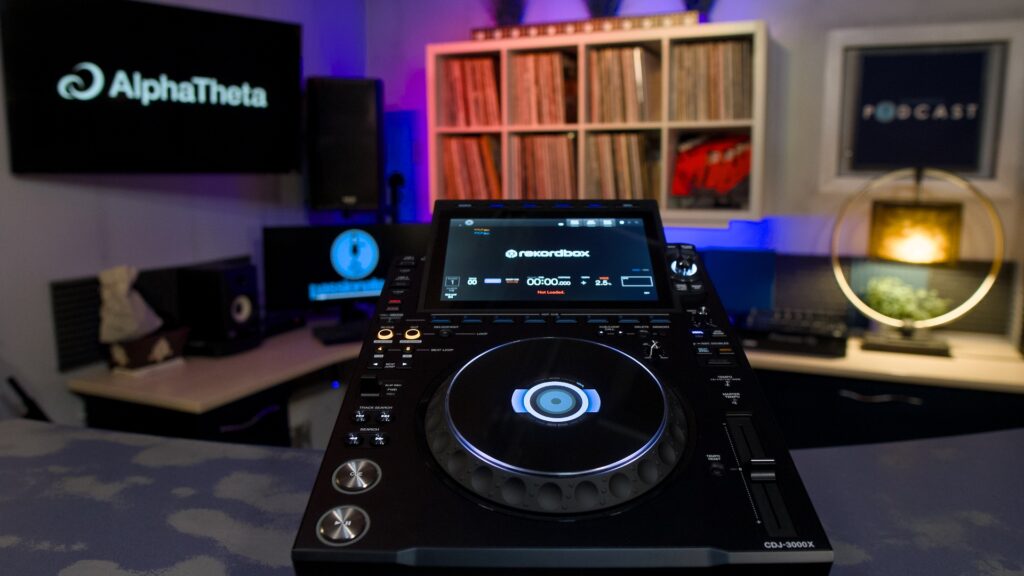
Ports & Specs
Compatible Software
rekordbox for Mac/Windows
rekordbox for iOS/Android
Serato DJ Pro – license needed
Compatible rekordbox/CloudDirectPlay
Dropbox, Google Drive
Compatible Music Streaming Services
Beatport, TIDAL
Playable Media
USB flash drive
USB SSD / HDD
PC/Mac (USB / LAN)
Mobile devices (iOS / Android)
Connectivity
USB Type-A × 1 (for storage)
USB Type-C × 2 (storage / PC connection)
LAN port × 1 (PRO DJ LINK)
Wi-Fi (IEEE802.11n/ac)
NFC login supported
Compatible Library
Device Library Plus
rekordbox-analyzed libraries can be exported and used via USB
Supported USB Formats
FAT16, FAT32, exFAT, HFS+
(*NTFS not supported)
Supported Audio Formats
MP3, AAC, WAV, AIFF, FLAC, ALAC
Output Terminals
Analog (RCA) × 1
Digital (Coaxial) × 1
Audio Performance
Frequency Response: 4 Hz – 40 kHzS/N
Ratio: 115 dBTotal
Harmonic Distortion: 0.0018 %
Display
10.1-inch capacitive full-color touchscreen display
Dimensions
Size: 344.6 × 490.4 × 130.1 mm (W × D × H)
Weight: 6.0 kg
Accessories
Power cable
Audio cables (Analog / Digital)
LAN cable
Quick Start Guide
Safety Precautions
Warranty (for some regions)
